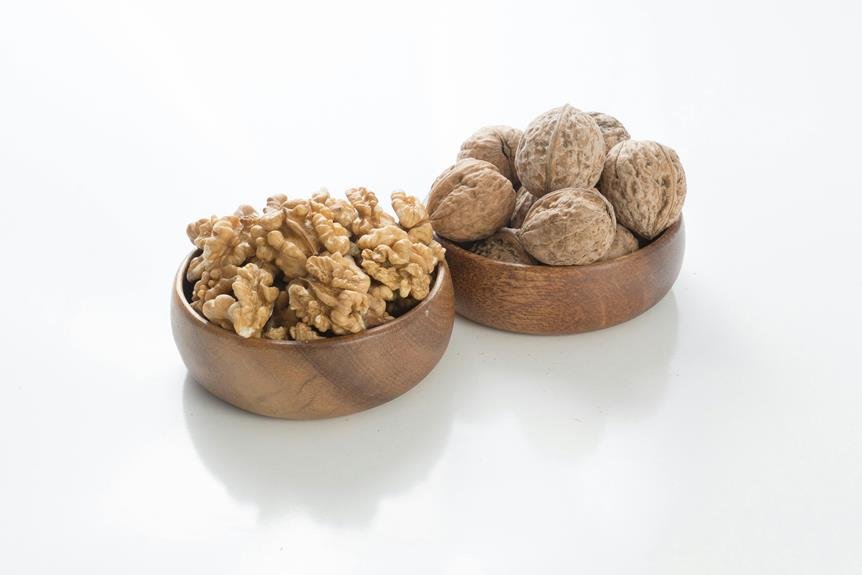
Have you ever considered how high-fiber meals could impact your cholesterol levels? The connection between fiber intake and cholesterol management is a fascinating area of study that continues to intrigue researchers and health professionals alike. By exploring the role of fiber in influencing cholesterol levels, you might uncover some surprising insights that could potentially transform your approach to maintaining heart health.
Understanding Cholesterol and Fiber
To understand the relationship between cholesterol and fiber, you must grasp how these two components interact in your body's overall health. Cholesterol is a waxy substance found in your blood that's essential for building cells and producing hormones. However, having high levels of bad cholesterol, known as LDL cholesterol, can increase your risk of heart disease.
Fiber, on the other hand, is a type of carbohydrate that the body can't digest. It comes in two forms: soluble and insoluble. Soluble fiber dissolves in water and can help lower LDL cholesterol levels by binding to it in the digestive system, preventing it from being absorbed into the bloodstream. Insoluble fiber, on the other hand, adds bulk to your stool, aiding in digestion and preventing constipation.
Role of Soluble Fiber in Cholesterol Reduction
Incorporating soluble fiber into your diet actively contributes to reducing LDL cholesterol levels and promoting heart health. Soluble fiber, found in foods like oats, fruits, and legumes, forms a gel-like consistency in your digestive tract, which helps to lower cholesterol by binding to bile acids. When bile acids are excreted through the stool, your liver needs to use cholesterol to produce more bile acids, thus reducing the overall cholesterol levels in your body.
Additionally, soluble fiber can help regulate blood sugar levels, which is crucial for heart health. By stabilizing blood sugar levels, soluble fiber reduces the risk of insulin spikes and inflammation, both of which are linked to heart disease. Studies have shown that increasing your intake of soluble fiber can lead to significant reductions in LDL cholesterol levels, ultimately decreasing the risk of cardiovascular issues. Therefore, including sources of soluble fiber in your daily meals can be a simple yet effective way to improve your cholesterol profile and support your heart health.
Impact of Insoluble Fiber on Heart Health
Consuming foods rich in insoluble fiber can play a significant role in supporting heart health by promoting digestive regularity and aiding in weight management. Insoluble fiber adds bulk to the stool, helping food move more quickly through the digestive system. This can prevent constipation and reduce the risk of developing conditions such as hemorrhoids and diverticulitis, which can indirectly impact heart health by reducing strain on the cardiovascular system.
Moreover, insoluble fiber can contribute to weight management by providing a feeling of fullness, which may prevent overeating and help control weight gain. Maintaining a healthy weight is crucial for heart health, as obesity is a significant risk factor for heart disease. By including foods like whole grains, nuts, and seeds in your diet, you can increase your insoluble fiber intake and support your heart health.
Incorporating a variety of high-fiber foods, including those rich in insoluble fiber, can be a simple yet effective way to promote heart health and overall well-being.
Practical Tips for High-Fiber Meal Planning
Boost your fiber intake by planning high-fiber meals that are both nutritious and delicious. Start your day with a fiber-rich breakfast by choosing whole-grain cereals or oatmeal topped with fruits and nuts. For lunch, opt for fiber-packed salads with a variety of colorful vegetables, beans, and a sprinkle of seeds. Snack on fresh fruits, veggies with hummus, or a handful of almonds to keep your fiber intake up throughout the day.
When planning dinners, incorporate beans, lentils, or chickpeas into soups, stews, or stir-fries for a hearty and fiber-filled meal. Swap out refined grains with whole grains like brown rice, quinoa, or whole-wheat pasta to increase your fiber consumption. Experiment with different herbs and spices to add flavor without relying on excessive salt or sugar.
Remember to drink plenty of water to help fiber move through your digestive system smoothly. Gradually increase your fiber intake to allow your body to adjust and prevent bloating or discomfort. By following these practical tips, you can easily create high-fiber meals that support your overall health and cholesterol levels.




